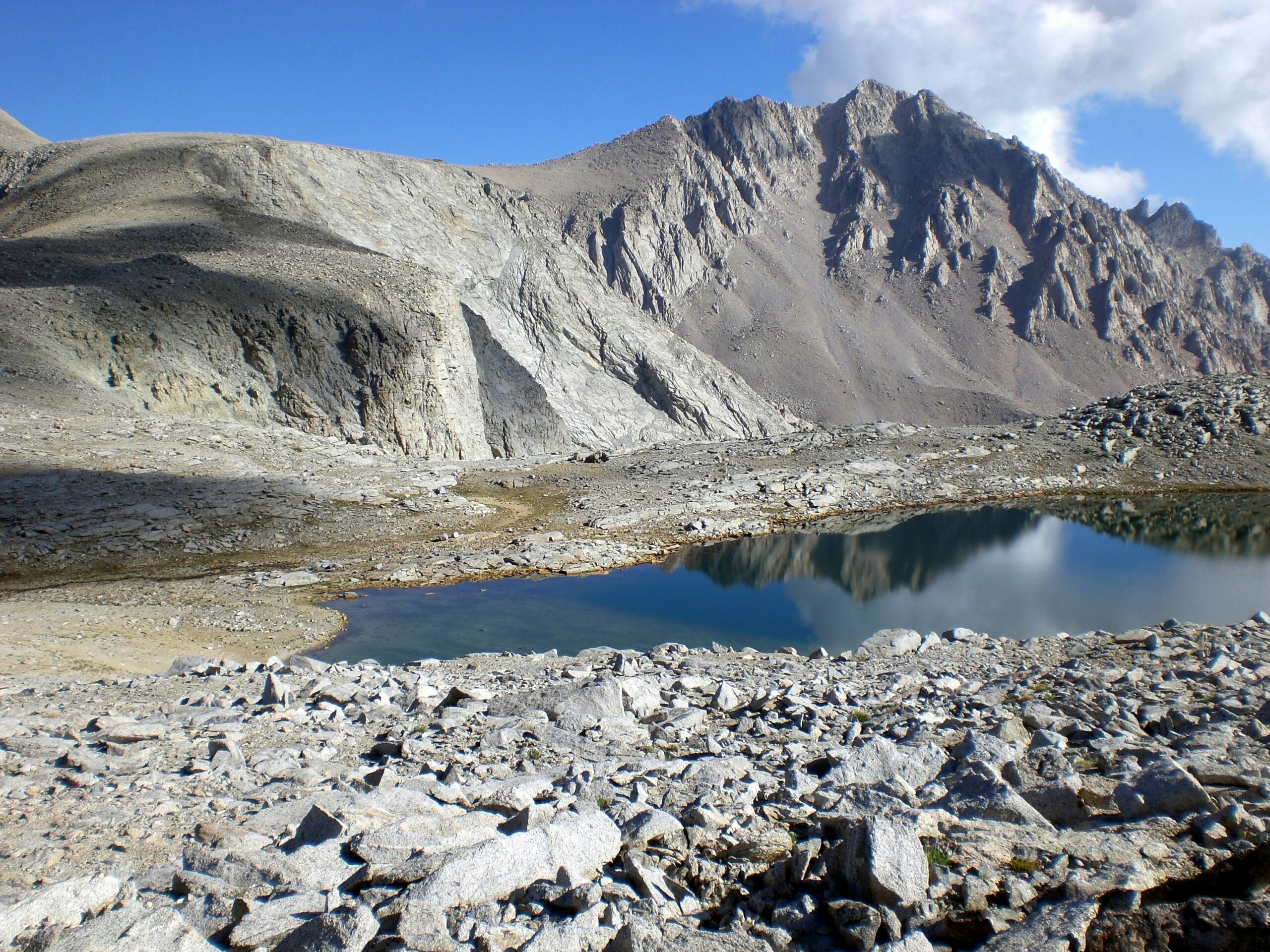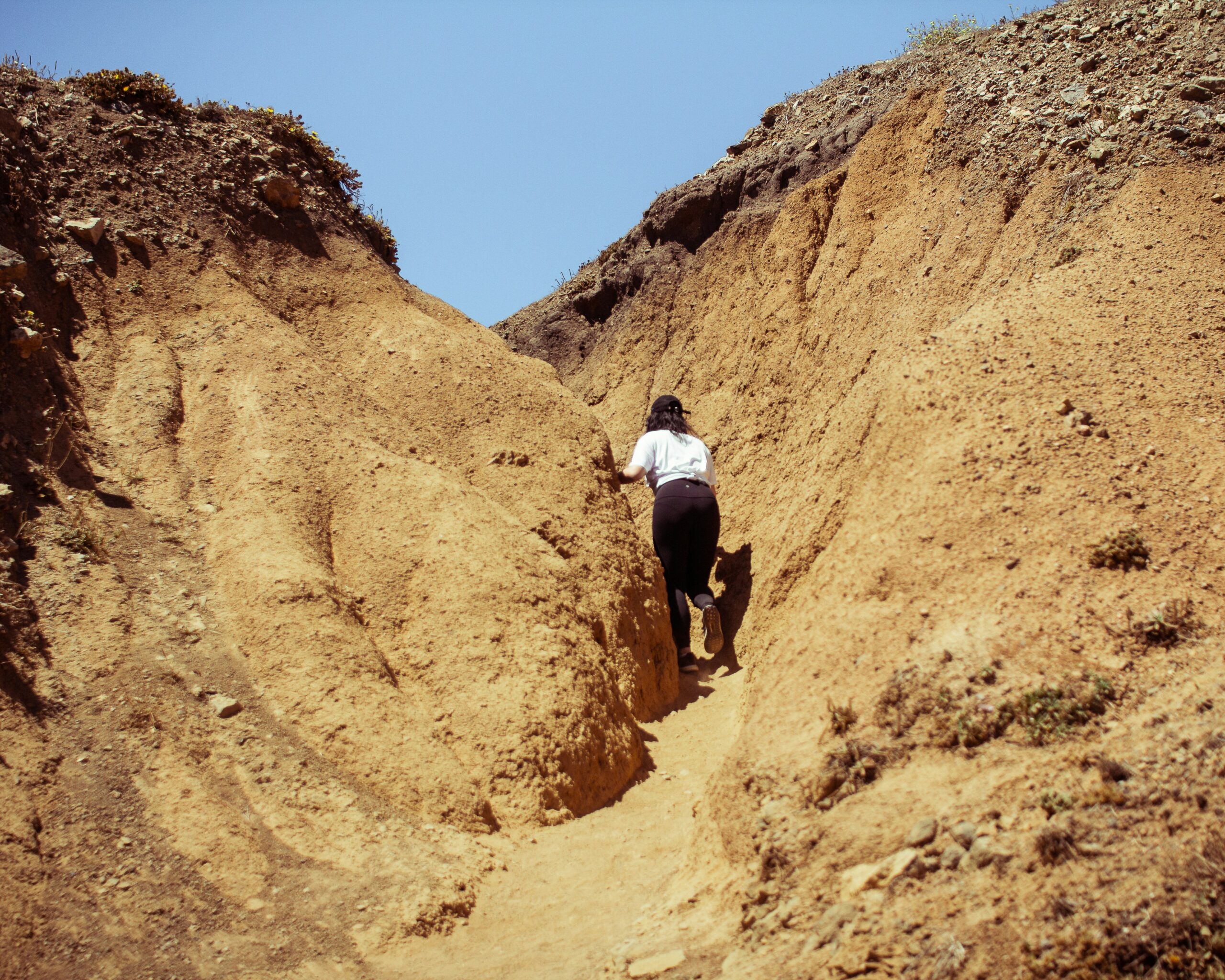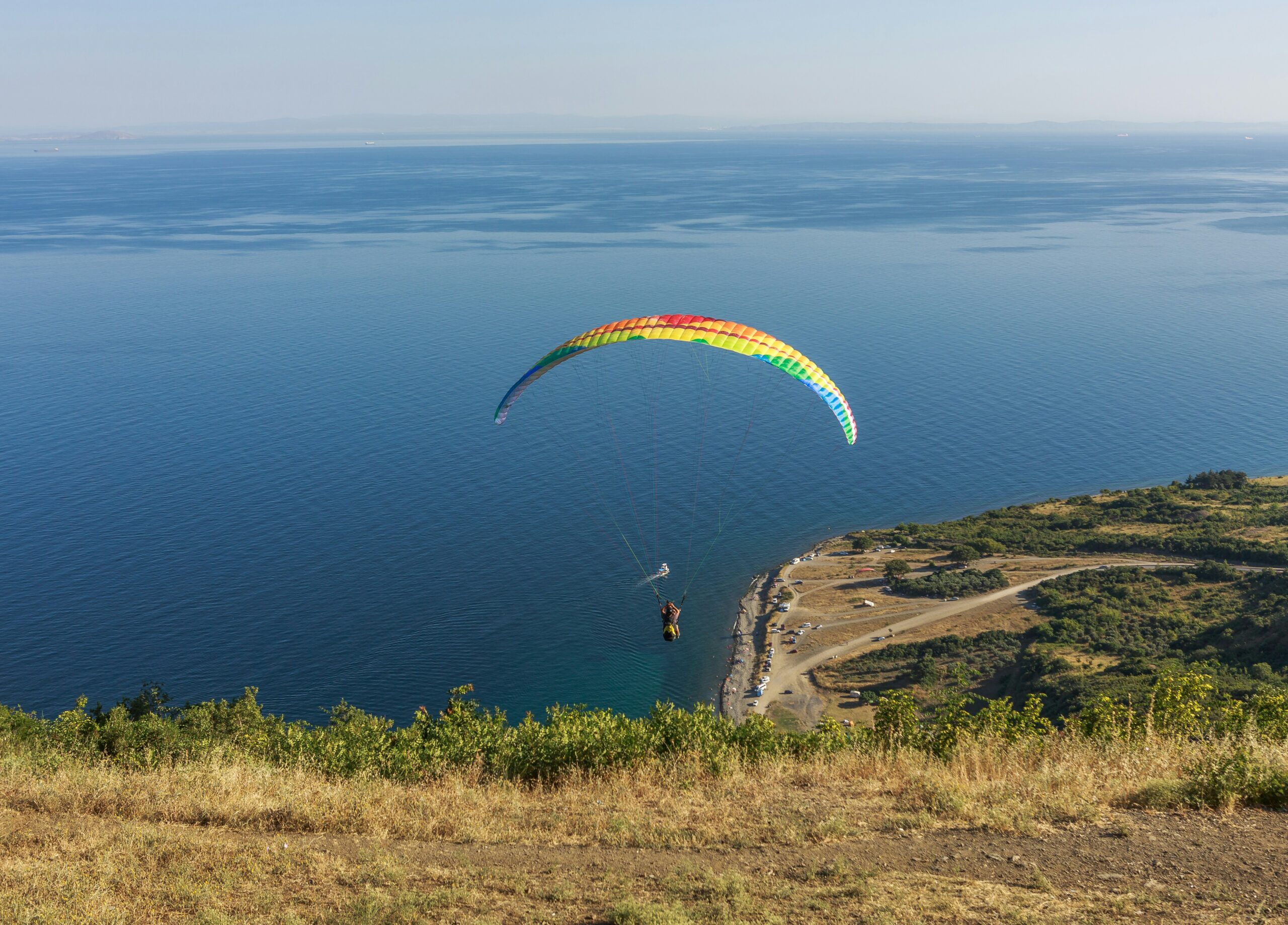If you find yourself ready to embark on an adventure up the majestic Mount Shasta, you may wonder if there is a high chance of getting lost on this awe-inspiring mountain. Rest assured, my friend, that while Mount Shasta presents its fair share of challenges, getting lost is not necessarily one of them. With the right preparation, a little bit of caution, and a dash of adventure, you can navigate your way through the stunning terrain of Mount Shasta and experience one of the most captivating journeys nature has to offer. So, lace up your boots, pack your sense of exploration, and let's discover the wonders that await atop this mountainous wonderland.
Overview of Mount Shasta
Location and prominence of Mount Shasta
Nestled in the breathtaking beauty of Northern California, Mount Shasta is a majestic peak towering at a height of 14,179 feet. Located in Siskiyou County, it is a part of the Cascade Range and is the second-highest peak in the subrange. Its prominence in the region is undeniable, both geographically and culturally. Mount Shasta holds immense significance for indigenous peoples and continues to captivate the hearts of adventurers and nature enthusiasts alike.
Significant features of Mount Shasta
While Mount Shasta's elevation is undoubtedly one of its most remarkable features, the mountain also boasts stunning glaciers and breathtaking alpine meadows. It is home to five major glaciers – Whitney, Bolam, Hotlum, Wintun, and Konwakiton. These icy masses add to the allure and wonder of Mount Shasta, drawing climbers from around the world to explore its pristine beauty. The mountain's slopes are graced with lush forests, cascading waterfalls, and an abundant variety of flora and fauna, making it an enchanting destination for nature enthusiasts.
Mount Shasta as a popular climbing destination
Mount Shasta's grandeur, coupled with its accessibility, has made it a popular destination for climbers seeking a formidable challenge. Its proximity to major cities such as San Francisco and Portland, as well as its reputation as an idyllic training ground for climbers aiming to tackle more formidable mountains, contributes to its popularity. From beginner routes to more technical ascents, Mount Shasta offers a range of options that cater to climbers of varying skill levels and ambitions. The allure of its challenging terrain and stunning vistas continues to draw climbers year after year.
Climbing Mount Shasta: Basic Statistics
Number of annual visitors or climbers
Each year, Mount Shasta attracts a significant number of climbers, eager to conquer its mighty slopes. It is estimated that around 7,000 to 8,000 climbers attempt to reach its summit annually. This substantial volume of climbers reflects the mountain's allure and popularity among outdoor enthusiasts, seeking both personal achievement and a connection with nature.
Common times of year to climb
While climbing Mount Shasta is possible throughout the year, the most common period for expeditions is between May and September. During this time, the mountain experiences milder weather conditions, making it more favorable for climbing. The summer months, particularly July and August, are the busiest times, as climbers take advantage of longer daylight hours and more predictable weather patterns. However, it is important to note that even during this period, weather conditions on the mountain can change rapidly, adding an element of unpredictability to the climb.
Average duration of climbing expeditions
The duration of climbing expeditions on Mount Shasta varies depending on several factors, including the chosen route, climber experience, and weather conditions. On average, climbers typically spend around two to three days on the mountain, including time for acclimatization, ascent, and descent. However, it is not uncommon for some climbers to complete the expedition in a single day, while others may opt for a more leisurely pace, extending their trip by a few days to fully immerse themselves in the mountain's beauty.

Rescue Operations on Mount Shasta
Frequency of rescue operations
While the allure of climbing Mount Shasta is undeniable, it is not without its risks. The mountain's challenging terrain and unpredictable weather have led to a significant number of rescue operations taking place annually. On average, there are approximately 35 to 45 rescue operations per year, highlighting the importance of preparedness and caution when embarking on this adventure.
Typical reasons for rescue operations
Rescue operations on Mount Shasta primarily occur due to a variety of factors, ranging from injuries to climbers becoming lost or disoriented. Injuries caused by falls, avalanches, or altitude-related illnesses are common reasons for rescue operations. Additionally, climbers may experience navigational difficulties, especially during periods of low visibility or whiteout conditions. It is crucial for climbers to recognize and respect the risks associated with Mount Shasta and take all necessary precautions to avoid finding themselves in need of rescue.
Success rates of rescue operations
Despite the challenging circumstances that often prompt rescue operations on Mount Shasta, the success rates of these operations are generally high. Thanks to the expertise and dedication of search and rescue teams, as well as the collaborative efforts of local authorities and climbers, the majority of rescue missions end with a successful outcome. However, it is important to acknowledge that the best way to approach climbing Mount Shasta is by prioritizing prevention and preparedness to minimize the need for rescue operations altogether.
Factors Contributing to Getting Lost on Mount Shasta
Complex terrain and trail systems
Mount Shasta's vast and complex terrain, coupled with a network of intricate trail systems, presents opportunities for climbers to become disoriented or lost. Navigating the mountain's numerous ridges, gullies, and valleys can prove challenging, particularly in adverse weather conditions or low visibility. It requires a solid understanding of route-finding techniques and proficiency in map and compass navigation skills. Without the necessary expertise and precautions, climbers may find themselves off-course, increasing the risk of getting lost.
Extreme weather conditions
Mount Shasta's exposure to unpredictable and extreme weather conditions adds another layer of complexity for climbers. Rapid changes in weather patterns, sudden snowstorms, and high winds can quickly create hazardous situations, making navigation and progress challenging. Climbers must closely monitor weather forecasts, be prepared for sudden weather changes, and exercise caution when faced with adverse conditions. Failing to do so significantly increases the risk of disorientation or getting lost on the mountain.
Inadequate preparation or experience
Insufficient preparation and experience can greatly contribute to the risk of getting lost on Mount Shasta. Climbing the mountain demands physical fitness, technical skills, and knowledge of mountaineering practices. Without a solid foundation of climbing experience and the necessary training, climbers may underestimate the challenges posed by the mountain and find themselves in precarious situations. Adequate preparation, including physical training, education, and mentorship, is vital to ensuring a safe and enjoyable ascent.

Personal Testimonies of Getting Lost
Stories from climbers who got lost on Mount Shasta
Numerous climbers have shared their personal accounts of getting lost on Mount Shasta, serving as cautionary tales and reminders of the mountain's challenges. These stories recount instances of disorientation, unexpected weather changes, and the realization of being off-route. Each testimony provides valuable insights into the psychological and physical stresses involved in such situations, highlighting the critical need for preparedness and decision-making skills when navigating the mountain.
Common themes or experiences
A recurring theme among the testimonies is the rapid onset of disorientation despite previous climbing experiences or confidence in navigational skills. The complexity of the terrain, in conjunction with unexpected weather events, often leads climbers astray. Feelings of confusion, anxiety, and vulnerability are prevalent in these accounts, emphasizing the importance of maintaining a composed mindset and employing proper decision-making protocols when faced with unexpected challenges.
Impact on their future climbing activities
Encountering the difficulties of getting lost on Mount Shasta has had a profound impact on climbers' future endeavors. For some, it served as a learning experience, prompting a thorough reassessment of their abilities, training, and preparation. Others found themselves hesitating to embark on similar adventures, wary of the risks associated with mountaineering. Nonetheless, these experiences serve as invaluable lessons, highlighting the importance of maintaining vigilance and respect for the mountains to ensure a safe and enjoyable climbing experience.
Preventive Measures to Avoid Getting Lost
Prior research and knowledge about the route
Thorough research and knowledge about the chosen route are essential preventive measures to avoid getting lost on Mount Shasta. Familiarize yourself with guidebooks, topographic maps, and trip reports to gain a comprehensive understanding of the terrain, potential hazards, and route-finding techniques. Identifying prominent landmarks, waypoints, and distinctive features along the route will aid in maintaining orientation and minimizing the chances of straying off-course.
Proper gear and resources
Being properly equipped with the right gear and resources is crucial for climbers to mitigate the risk of getting lost. Carry a reliable compass, GPS device, or smartphone app with offline maps to aid in navigation. Additionally, pack essential survival gear such as extra clothing, food, water, a headlamp, and a fully charged communication device to ensure you are prepared for unexpected circumstances. Investing in high-quality gear and regularly maintaining it is essential for a safe and successful climb.
Methods and benefits of tagging or signing in
One effective method to enhance safety and prevent getting lost is by utilizing tagging or signing in systems provided by climbing organizations or park authorities. These systems require climbers to register their intended route, estimated time of return, and emergency contact information. By signing in and out at designated locations, search and rescue teams have crucial information to mount a timely response in case of an emergency. This practice also allows climbers to track other parties on the mountain, fostering a sense of camaraderie and support within the climbing community.

Role of Guides and Guided Tours
Benefits of climbing with a guide
Embarking on a guided climb with an experienced and knowledgeable guide offers numerous benefits, especially for those with limited climbing experience or unfamiliarity with Mount Shasta. Guides possess extensive knowledge of the mountain's terrain, weather patterns, and route options, maximizing safety and chances of a successful ascent. They provide valuable instruction on navigating complex terrain, decision-making during challenging conditions, and essential mountaineering skills. Climbing with a guide allows you to focus on the experience, learn from their expertise, and enjoy the journey without the added stress of route-finding or following complicated instructions.
Difference in statistics between guided and non-guided climbs
When comparing statistics between guided and non-guided climbs on Mount Shasta, a clear distinction emerges. Guided climbs demonstrate a considerably lower incidence of rescue operations and incidents of getting lost. The presence of a guide significantly reduces the risks associated with navigation, decision-making, and route-finding, resulting in a higher success rate and fewer incidents requiring external intervention. However, it is vital to note that climbers on guided expeditions should still maintain personal responsibility, follow the guide's instructions, and actively participate in decision-making processes.
How to find and choose a climbing guide
When seeking a climbing guide for Mount Shasta, it is essential to prioritize experience, certifications, and positive testimonials. Research local guide services or organizations that specialize in mountaineering and have a strong reputation for safety and excellence. Look for guides with certifications from recognized bodies such as the American Mountain Guides Association (AMGA) or the International Federation of Mountain Guides Associations (IFMGA). Engage in conversations with potential guides, ask about their experience on the mountain, and ensure there is clear communication and alignment of expectations before committing to a climb.
Mount Shasta Climbing Regulations
Current regulations for climbing Mount Shasta
To ensure the safety and preservation of Mount Shasta's delicate ecosystem, various regulations have been implemented for climbers. These regulations primarily focus on protecting the mountain's sensitive areas, such as the glaciers and fragile alpine meadows. Climbers are required to obtain a wilderness permit, which helps manage the number of visitors and ensures compliance with environmental protection guidelines. Additionally, climbers are encouraged to practice Leave No Trace principles, pack out all waste, and avoid damaging flora and fauna.
How these regulations aim at preventing climbers getting lost
While the primary objective of Mount Shasta's climbing regulations is environmental preservation, they indirectly contribute to preventing climbers from getting lost. By managing the number of climbers on the mountain, these regulations minimize overcrowding, reducing the chances of navigational errors and confusion caused by following multiple parties. Furthermore, the emphasis on obtaining a wilderness permit encourages climbers to engage in thorough route planning, fostering a more prepared and informed climbing community.
Penalties and consequences of not following regulations
Failure to comply with Mount Shasta's climbing regulations can result in penalties and consequences. Violators may be subject to fines, citations, or even legal action, depending on the severity of the offense. Additionally, climbers who disregard these regulations risk jeopardizing the mountain's fragile ecosystem and its long-term sustainability. It is the collective responsibility of climbers to respect and abide by these regulations to preserve Mount Shasta's natural beauty and ensure a safe environment for both present and future climbers.
Importance of Climbing Training and Physical Fitness
Physical demands of climbing Mount Shasta
Climbing Mount Shasta demands a significant level of physical fitness, agility, and stamina. The ascent involves navigating challenging terrain, traversing steep slopes, and potentially crossing glaciers. Each step requires strength, endurance, and the ability to carry heavy loads. Physical preparation should focus on cardiovascular fitness, muscular strength and endurance, as well as flexibility. A combination of hiking, running, strength training, and endurance exercises tailored to mountaineering activities will help climbers meet the physical demands of the climb.
Types of training beneficial for climbing
Several types of training are beneficial for climbing Mount Shasta. Cardiovascular exercises, such as running, cycling, or stair climbing, improve endurance and cardiovascular fitness, preparing climbers for sustained exertion at altitude. Strength training, particularly focusing on the lower body, core, and upper body muscles, enhances the ability to carry heavy packs and navigate steep slopes. Flexibility exercises, such as yoga or stretching routines, promote injury prevention and ease of movement. Additionally, engaging in regular hiking and hill training in similar terrain will help condition the body for the challenges specific to Mount Shasta.
Connection between fitness level and risk of getting lost
There is a direct connection between an individual's fitness level and their risk of getting lost on Mount Shasta. Climbers who are physically fit are more likely to have the strength and endurance necessary to navigate challenging terrain and adapt to unexpected obstacles. A higher fitness level allows climbers to maintain mental focus, make sound decisions, and respond effectively to adverse situations, reducing the likelihood of becoming disoriented or lost. Prioritizing physical fitness as part of the training process significantly enhances climbers' safety and overall climbing experience.
Conclusion: Assessing the Actual Risk
Analysis based on collected data and testimonies
Based on collected data and personal testimonies, it is clear that Mount Shasta poses significant challenges and risks to climbers. The frequent occurrence of rescue operations, disorientation accounts, and the mountain's complex terrain supports the understanding that the risk of getting lost is notable. However, it is crucial to emphasize that with proper preparation, education, and adherence to safety protocols, the risk can be significantly reduced.
Relative risk compared to other climbing destinations
When considering the risk of getting lost, it is essential to put Mount Shasta into perspective. While the mountain does present its own unique challenges, with adequate preparation and caution, climbers can navigate its trails and summit safely. Comparable mountains, such as Mount Rainier or Denali, may pose higher risks due to more extreme weather conditions or technical difficulties. Mount Shasta's accessibility, predictable climbing seasons, and the availability of knowledgeable guides contribute to a climbing experience that, while demanding, can be relatively safe.
Overall message for potential climbers
For potential climbers considering an expedition to Mount Shasta, the key message is to approach the climb with respect, caution, and thorough preparation. Understand the challenges posed by the mountain and ensure you are equipped with the necessary skills, knowledge, and gear to navigate safely. Consider engaging a guide, particularly if you are new to mountaineering or unfamiliar with the mountain. Ultimately, it is by prioritizing safety, preparedness, and respect for the mountain that climbers can enhance their chances of a successful ascent and return home with lasting memories of an unforgettable adventure on the magnificent Mount Shasta.
